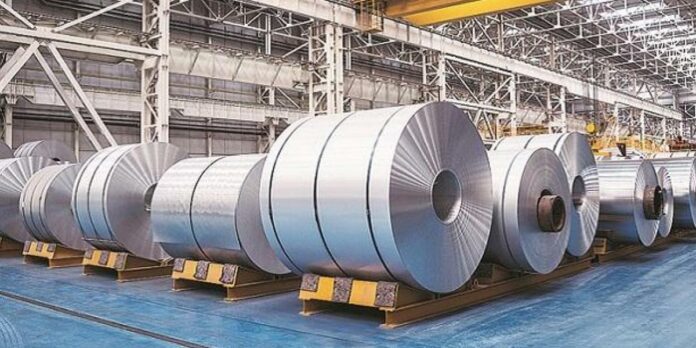Steel businesses are facing a large drop in profitability over the next 12 months after two years of strong growth, according to Icra, as the industry faces various headwinds including export duties on completed steel, unprecedented coal and energy cost pressures, and subdued domestic demand. The outlook for the sector has been changed from positive to stable by the rating agency.
High inflation and front-loading of policy rate hikes would exacerbate such problems. As a result, in Icra’s base case scenario, while domestic steel demand growth is forecast to remain at a healthy 7-8 percent in FY2023, the domestic steel industry’s overall operating profits for the current fiscal are revised downwards by around 30% compared to the previous estimate made before the Russia-Ukraine conflict, as margins are squeezed by lower steel prices and higher input costs.
“Despite the correction in domestic iron ore prices, the industry’s operating profits are expected to decline by US$ 80-90/MT in Q1 FY2023, with domestic hot-rolled coil prices correcting by around 9% since the imposition of the export duty, and coking coal consumption costs poised to spike by around 30-35 percent quarter-on-quarter. While margin pressure is likely to persist in the seasonally weak second quarter, when steel prices are likely to remain under pressure, the 27 percent drop in coking coal spot prices in the last three weeks bodes well for steelmakers’ second-half margins when demand conditions are expected to improve” he concluded.
Following the steel upcycle, steel mills have announced large-scale expansion plans, resulting in a 40 million tonne per annum (mtpa) increase in India’s steel capacity over the next five years (FY2022–FY2026), nearly double the capacity added over the previous five years (FY2017–FY2021). Despite these large expansion plans and a future moderation in industry earnings, the steel industry is now more resilient to project-related risks, which significantly weakened the sector’s credit profile during the previous capex cycle of FY2012-FY2016, thanks to the deleveraging that has occurred.
“With capital deployment for these upcoming projects expected to be relatively modest during the early years of implementation,” Roy continued, “the industry’s key leverage ratio of Total debt/ OPBITDA is expected to remain at a comfortable 1.5 times in FY2023, weakening from the decadal low of around 1 time recorded in FY2022, but remaining significantly lower than the 2.9 times witnessed in FY2019 during the pre-pandemic period.”
Follow & connect with us on Facebook, LinkedIn & Twitter.

